Removing crayfish from the Santa Monica Mountains
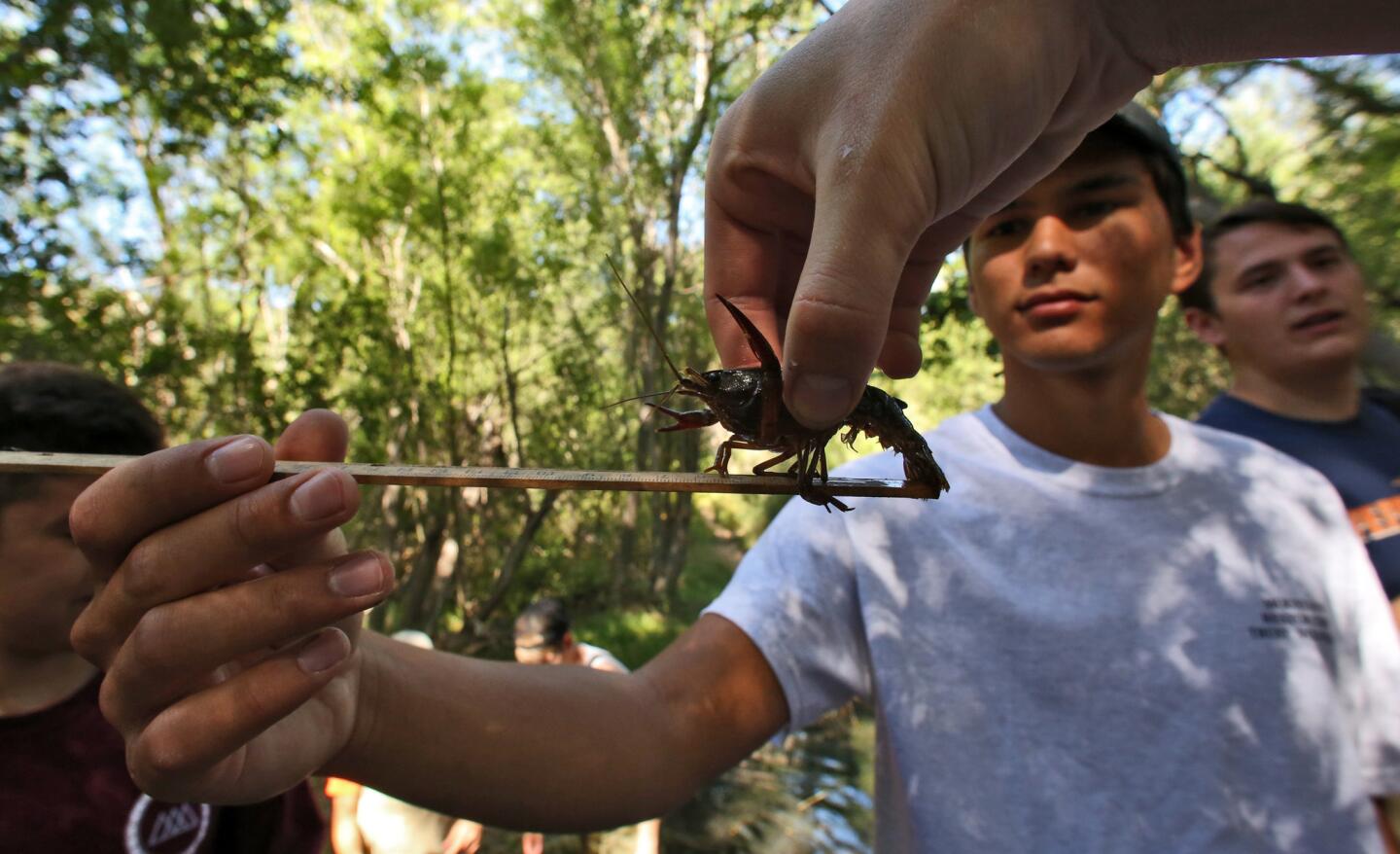
Josh Myers, 18, and Jordan Seah, 22, measure a crayfish caught in the Santa Monica Mountains. The nonnative 3-inch-long crayfish has colonized and multiplied in the 109-square-mile Malibu Creek watershed over the last century. (Irfan Khan / Los Angeles Times)
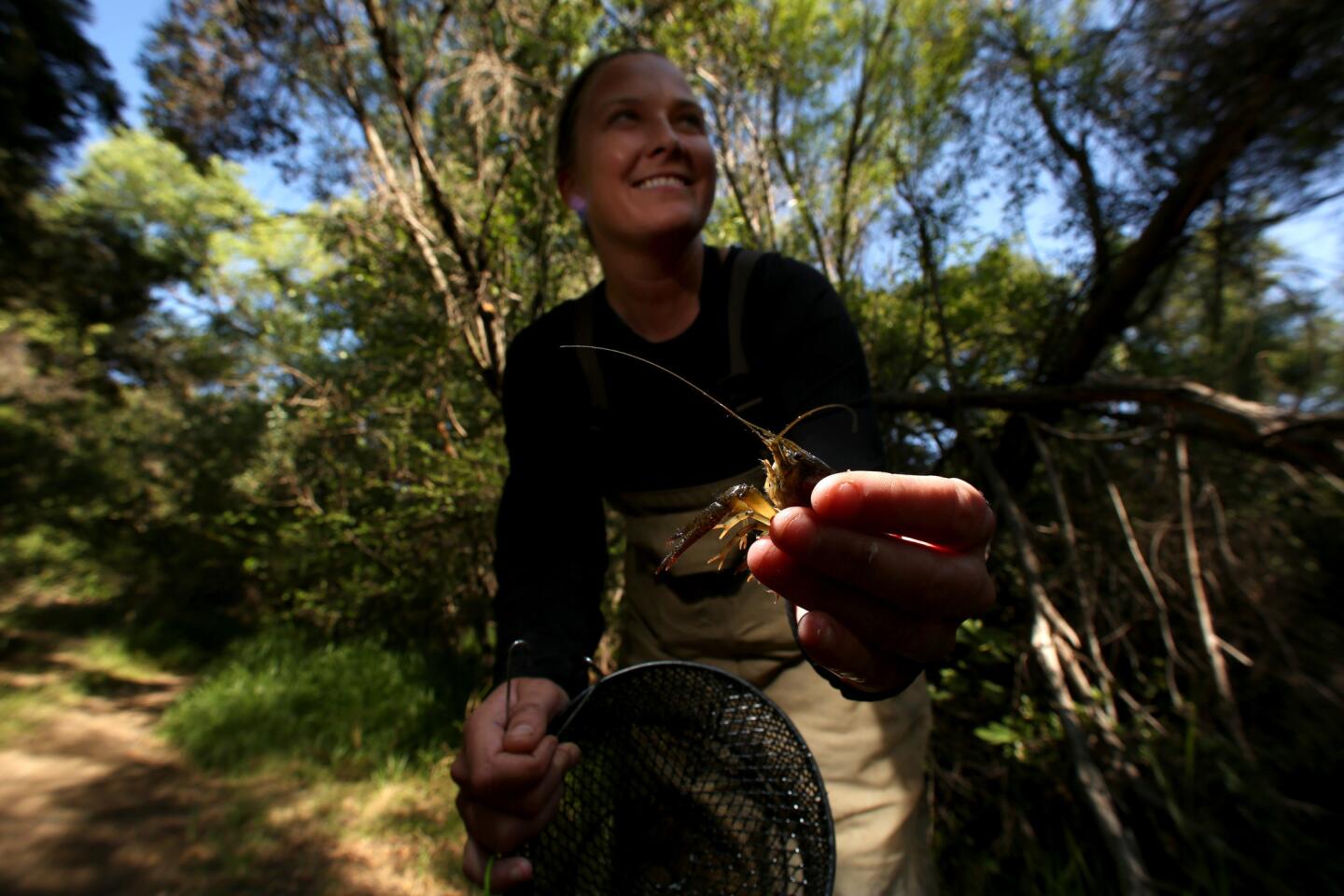
Kyle Troy holds a crayfish caught in a trap laid in Medea Creek in the Santa Monica Mountains. Troy and volunteer students from Pepperdine University are on mission to remove all of the invasive crayfish in the area. (Irfan Khan / Los Angeles Times)
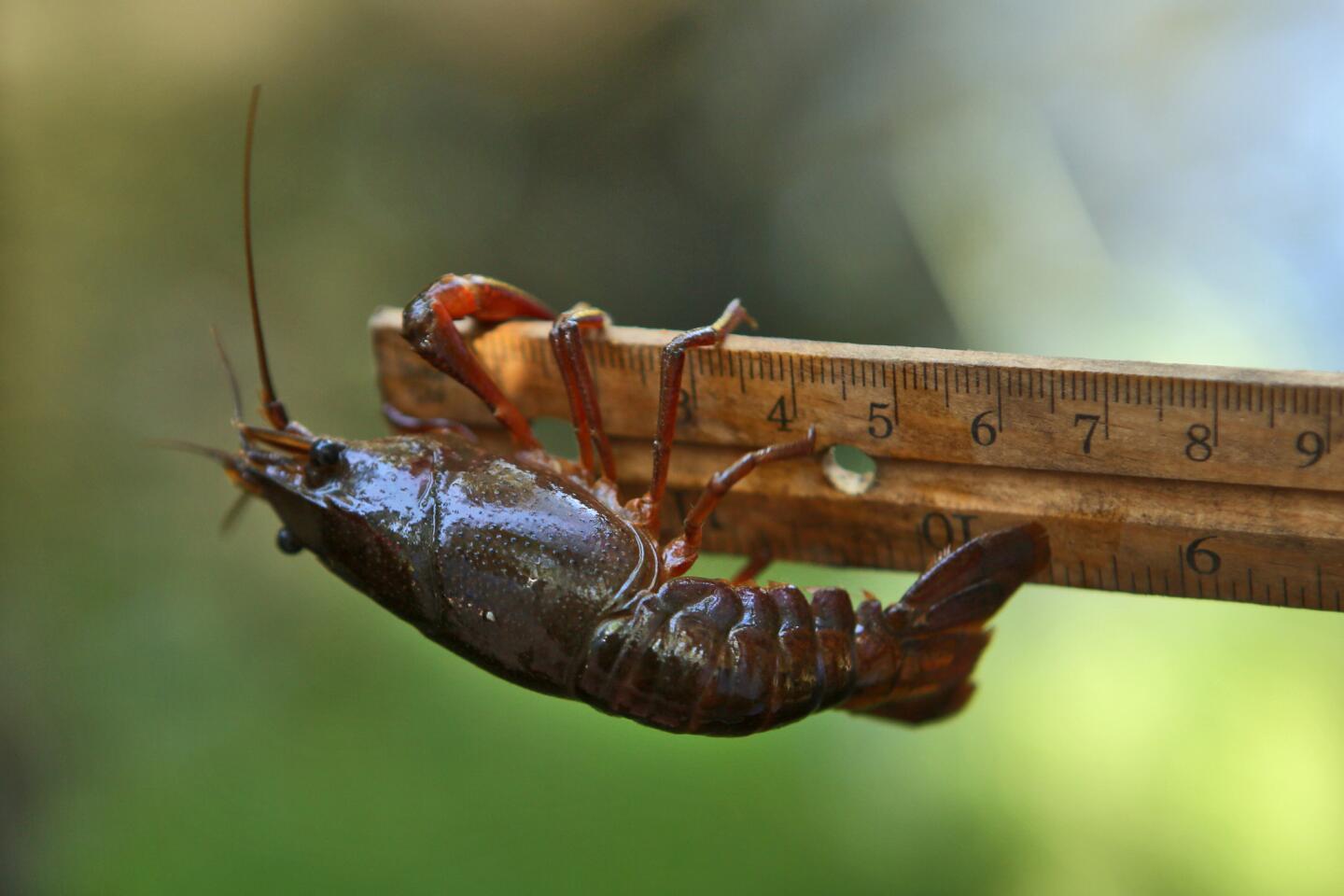
A crayfish caught by Kyle Troy and volunteer students from Pepperdine University is measured. Over the last year, the effort led by Troy and Mountains Restoration Trust biologist Anders Reimer has trapped and removed roughly 44,000 of the creatures. (Irfan Khan / Los Angeles Times)

A group of volunteer students from Pepperdine University are on a mission to trap and remove all the invasive crayfish in Medea Creek on the north end of the Santa Monicas. (Irfan Khan / Los Angeles Times)
Advertisement
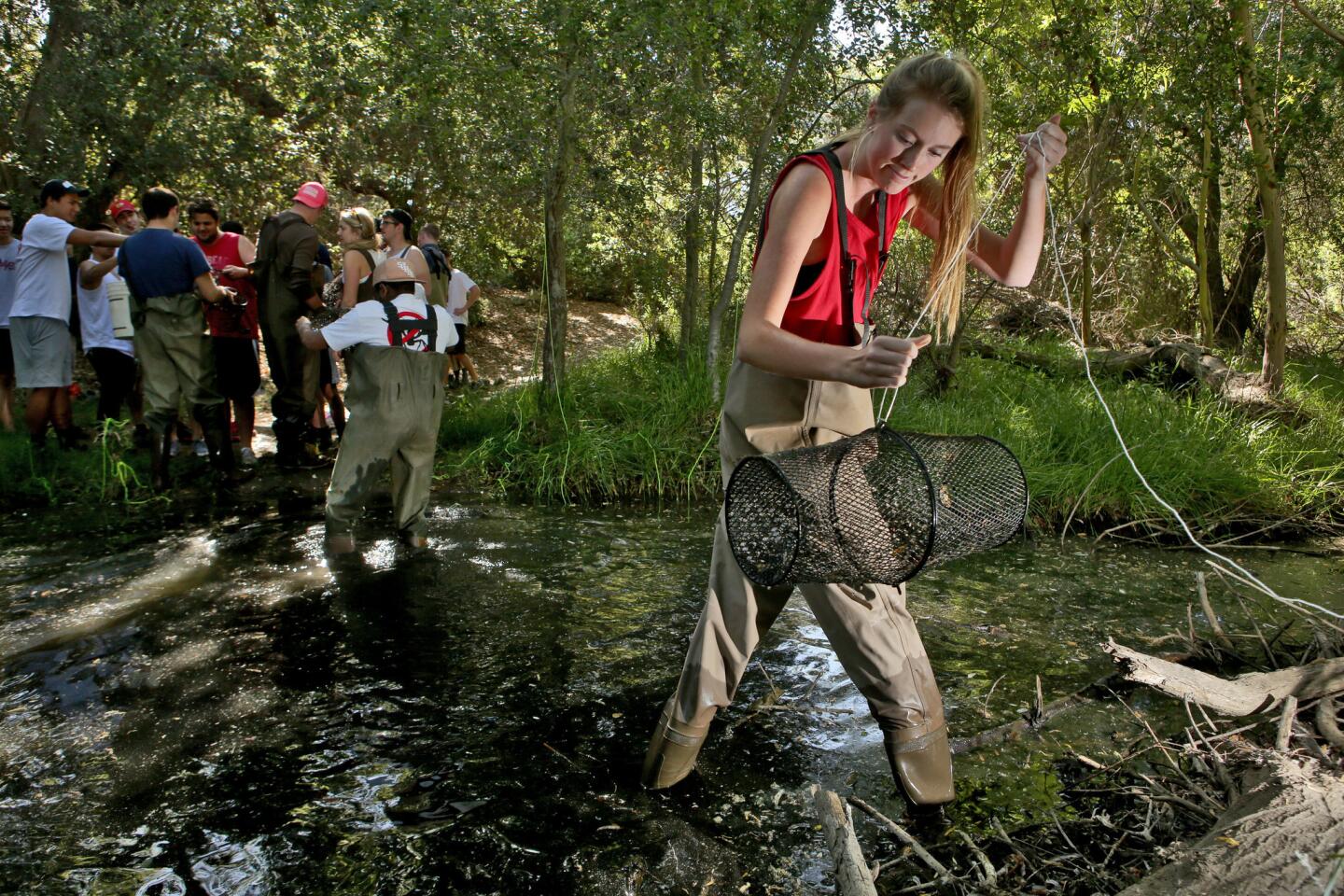
Whitney Hagstrom, 22, pulls a crayfish trap from Medea Creek in the Santa Monica Mountains. Crayfish were introduced by fishermen who used them as bait. Now they thrive wherever there is year-round running water shaded by oak trees, willows and brambles. (Irfan Khan / Los Angeles Times)
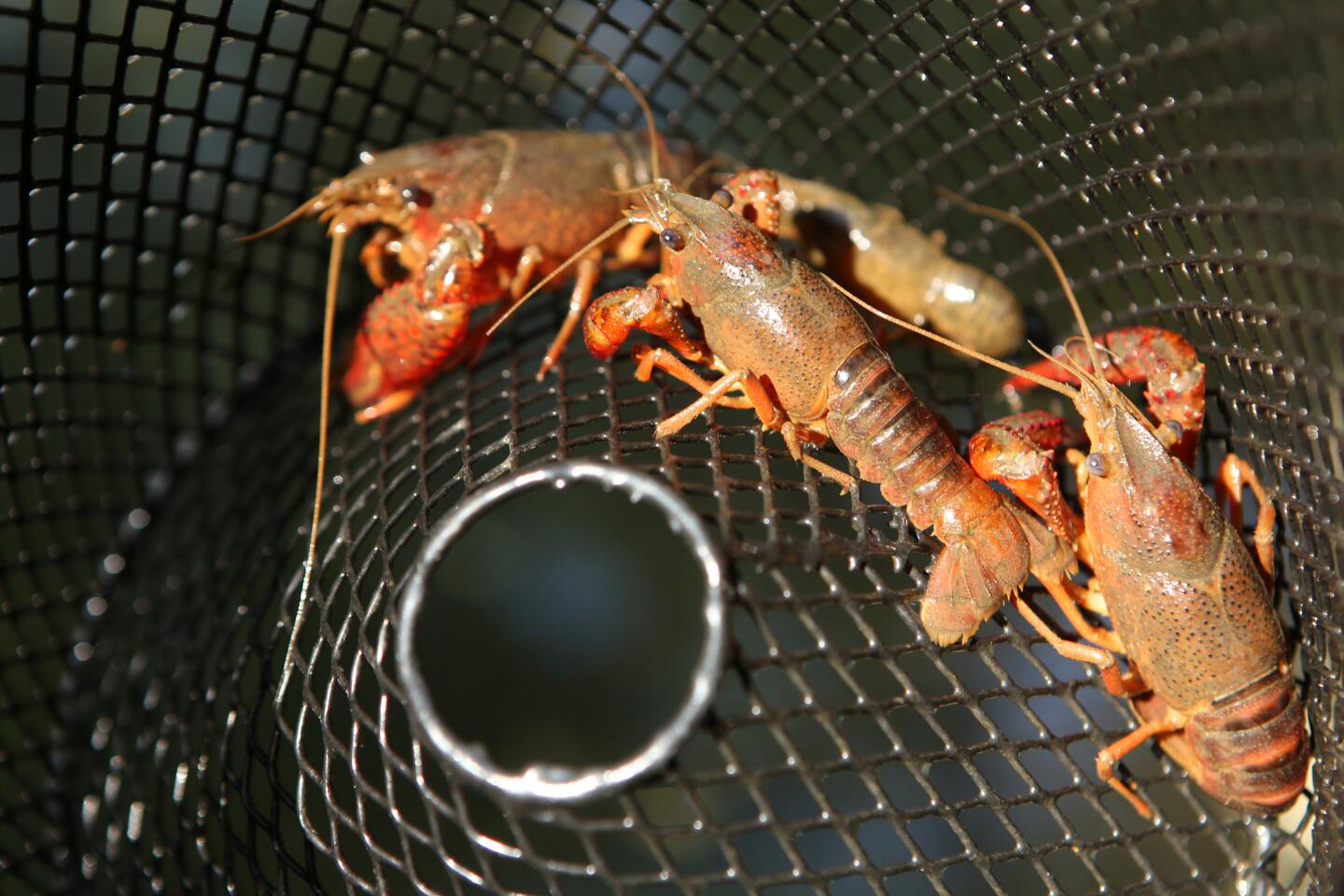
Some of the crayfish caught in Medea Creek by Kyle Troy and volunteer students from Pepperdine University. Removing the invaders from wilderness streams is arduous work. “But we’re making a dent,” Troy said. “In areas cleared of crayfish, tree frogs are singing again.” (Irfan Khan / Los Angeles Times)



